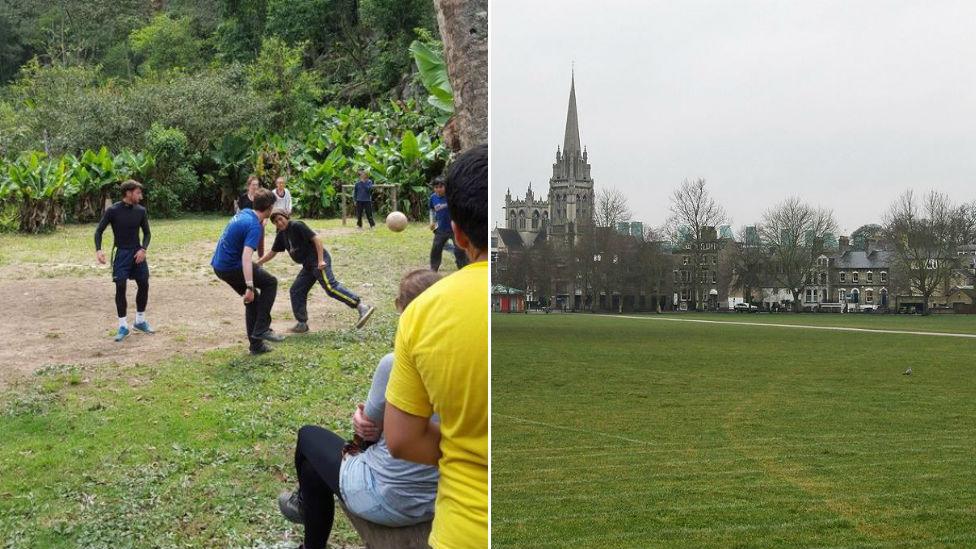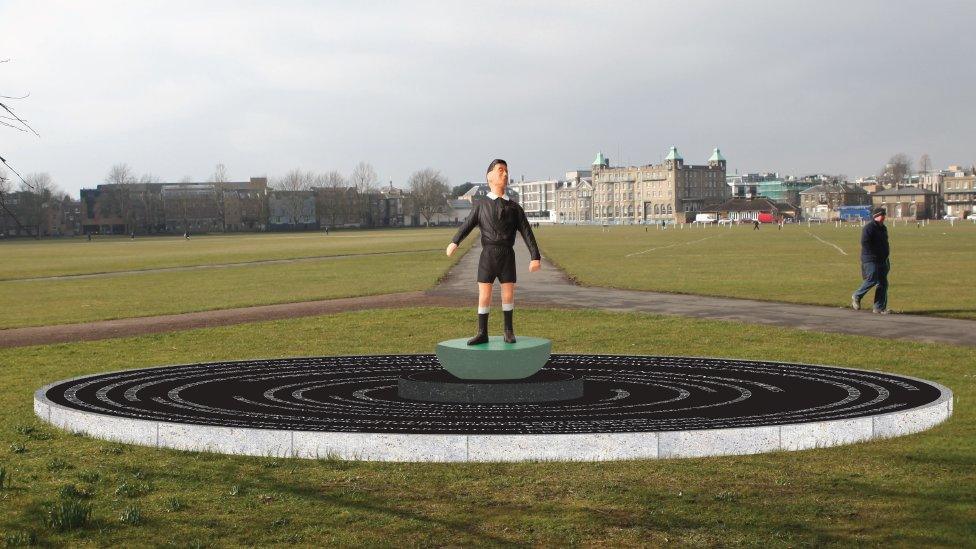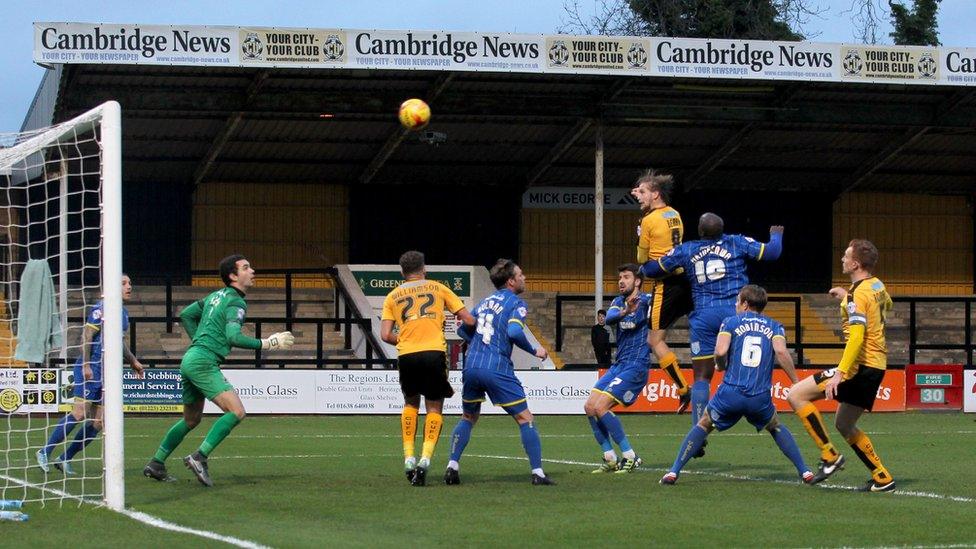Football fans' memories gathered for Cambridge sculpture
- Published

Football rules: From the beautiful game in Machu Picchu in Peru, to Parker's Piece in Cambridge
A sculpture celebrating what football means to the masses is being created to mark the contribution to the sport's rules of some 19th Century students.
Cambridge University students first posted rules in a city centre park in 1848. Elements of them were later adopted by the Football Association.
A stone sculpture inscribed with the 1848 rules will be installed in the autumn. Football stories, memories and even chants are also being gathered.
They will go on display in 2017.
It has been claimed the original rules of football were developed by students playing on Parker's Piece, with some people going so far as to suggest the park in Cambridge is therefore the birthplace of football.
'Planet's favourite sport'
A plaque at the park already celebrates how the "Cambridge Rules" became the "defining influence on the 1863 Football Association rules".
The FA, however, said although "elements" of the Cambridge Rules were in its own version, there were "a number of differences".

An early proposal by one artist for a Subbuteo-style referee sculpture was scrapped in 2013
However, the link looks set to be celebrated after artists Alan Ward and Neville Gabie won a commission from the city council to create a piece of commemorative art - a large stone cut into nine, engraved with the original 1848 laws of the game in different languages.
The four cornerstones will stay on Parker's Piece, but the others will "travel to five football-loving countries as part of a cultural exchange".
A website - Cambridge Rules 1848, external - has also been launched as part of the project asking for people's football stories from around the world, including personal anecdotes, stories about where people play or watch the game, and favourite football songs and chants.

Fans have already been sending their favourite stadium photos to the website - from Buenos Aires to a slightly smaller audience at Lostock St Gerards, Preston
It is intended to "create a truly global window on how football is experienced and has developed to become the planet's favourite sport - all from one small part of our city".
The art project is funded by S106 developer contributions made to Cambridge City Council and is supported by the National Football Museum in Manchester.

Perhaps the more familiar face of football in the city - Cambridge United playing AFC Wimbledon at the Abbey Stadium at League Two
- Published23 November 2014
